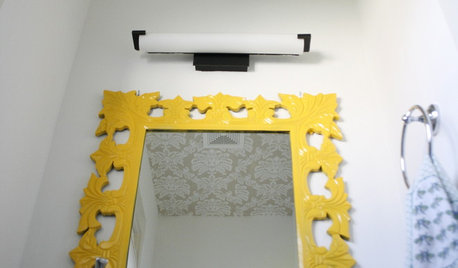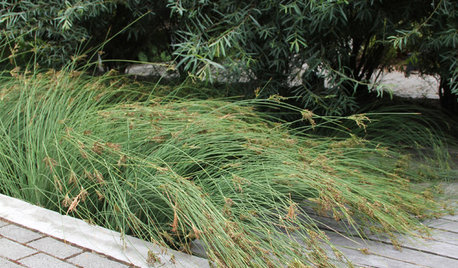Protecting from NBF
anna_in_quebec
14 years ago
Related Stories

HOUSEKEEPINGProtect Your House From Winter Water Damage
Avoid costly repairs by learning to spot potential problem areas before water damage is done
Full Story
HOME TECHTo Feed and Protect: Care for Your Pet From Afar With New Devices
You might miss the nuzzles, but your dog or cat won't miss food, water or monitoring with these high-tech feeders and cameras
Full Story
FENCES AND GATESA Deer Fence Can Be Decorative as Well as Protective
You need a monster-size fence to shelter your garden from deer, but it doesn’t have to look like a monstrosity
Full Story
DECORATING GUIDESQuick Fix: Protect Your Mirrors!
See how a common carpet protector can save your mirrors, too
Full Story
GARDENING AND LANDSCAPINGPlan for Summer: Protect Your Family With a Safe Pool
Fencing, presence detectors and non-slip materials help keep your pool area accident-free
Full Story
GARDENING AND LANDSCAPINGCreate Nests: Treat Yourself to a Protected Walkway
Turn a garden path into an exploration of inviting nooks and beautiful views
Full Story
GARDENING GUIDESProtect a Precious Resource With a Rain Garden
Promote pure water and a beautiful landscape with a garden design that makes the most of the rain
Full Story
REMODELING GUIDES5 Ways to Protect Yourself When Buying a Fixer-Upper
Hidden hazards can derail your dream of scoring a great deal. Before you plunk down any cash, sit down with this
Full Story
ENTRYWAYSGlass Doors That Welcome — and Protect Your Privacy Too
These front-door designs let in the light but keep your air-guitar performances safely in-house
Full StoryMore Discussions







kaboehm (zone 9a, TX USA)
jodik_gw
Related Professionals
Windham Landscape Architects & Landscape Designers · Parole Landscape Architects & Landscape Designers · Biloxi Landscape Contractors · Burlington Landscape Contractors · Hicksville Landscape Contractors · Hoover Landscape Contractors · Paramount Landscape Contractors · Plainview Landscape Contractors · New Carrollton Landscape Contractors · Sun Valley Landscape Contractors · Bakersfield Swimming Pool Builders · Eastvale Swimming Pool Builders · Haltom City Swimming Pool Builders · Visalia Swimming Pool Builders · Brookhaven Outdoor Lighting & Audio Visual SystemsNoni Morrison
anna_in_quebecOriginal Author
salpal
e36yellowm3
anna_in_quebecOriginal Author
jodik_gw
kaboehm (zone 9a, TX USA)
Noni Morrison
jodik_gw
salpal
jodik_gw
Noni Morrison
anna_in_quebecOriginal Author
jodik_gw
salpal
phoenixryan
anna_in_quebecOriginal Author
phoenixryan
jodik_gw
Noni Morrison
jodik_gw
Noni Morrison
beachplant
chazparas
anna_in_quebecOriginal Author
chazparas
Noni Morrison
chazparas
jodik_gw